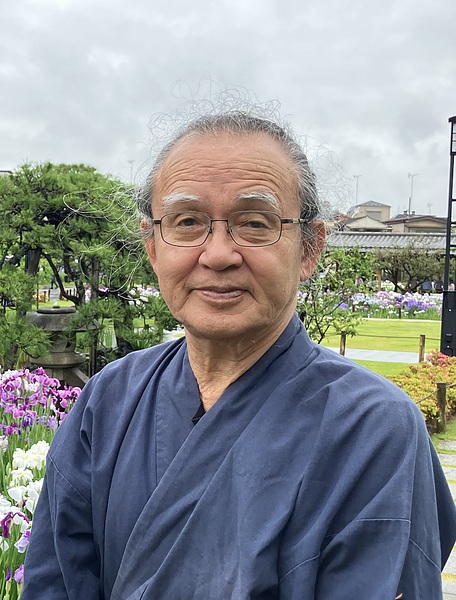英検1級道場-2016-2英検1級、準1級面接試験実況中継 更新版4(11/12 22:00)
英検1級道場では、2次試験合格を目指して多くの人が準備に時間をかけています
下記をクリックすると、参考になる記事が満載です
https://mbp-japan.com/chiba/eiken/column/?jid=5003270
----------------------------------------
下記は、英検1級2次試験対策-頻出問題に関する論点整理の一例です
Is the current national health-insurance system unsustainable?
今の国民健康保険制度は維持できるか?
・健康保険制度は、勤労者と会社がが健康保険組合に保険金を払い、病気になった時に軽い負担で診療を受けられる互助システムである。(仕組みは生命保険などと同じだが、強制加入であり、「社会保険」という名前の税金であるともいえる)
・不足する金額は、国が税金を使って補填している。
・政府債務が巨額な中でこれ以上の税金投入も難しいことから、保険の掛け金値上げ、治療を受けた際の負担割合増加(75歳以上の高齢者の負担率も1割からアップ)
・いずれは現役勤労者の負担も考慮する必要がある。
・当座できることは、国民が健康な生活をし、病院にかかる機会を少なくすることである。
・医療費を高くすることは、国民が健康に気を付けるようになるための賢明な選択肢かもしれない
下記は、上記の論旨をグーグル翻訳したものですが、大半が問題なく使えます
The health insurance system is a mutual assistance system in which workers pay insurance premiums to the health insurance association and receive medical treatment at a light cost when they become ill. (Same as life insurance, etc.).
The shortfall is covered by the state through taxes.
As the number of elderly people increases and the number of sick people increases, medical expenses tend to increase.
Moreover, the recent increase in advanced medical care has increased medical costs, making it difficult to maintain the insurance system.
Given the enormous amount of government debt, it is difficult to inject more tax money, so insurance premiums will be raised, and the burden ratio for those receiving medical treatment will increase (the burden ratio for the elderly aged 75 and over will also increase by 10%).
It is also necessary to consider the burden on workers.
What can be done for the time being is for the people to lead healthy lives and reduce the chances of them going to the hospital.
Higher healthcare costs may be a smart option to get people to take care of their health
----------------------------------
下記は、AIに相談したら書いてくれた論点です
AIは積極的に活用すべきです
The sustainability of Japan's national health insurance system, known as the National Health Insurance (NHI) or Kokumin Kenko Hoken, is a topic of ongoing debate and concern.
While the system has provided comprehensive healthcare coverage for the Japanese population, it faces several challenges that raise questions about its long-term sustainability.
Here are some key considerations:
Challenges to Sustainability:
Aging Population: Japan has one of the world's most rapidly aging populations, which places increased demands on the healthcare system. An aging population typically requires more healthcare services, and this can strain the system's financial resources.
Rising Healthcare Costs: Healthcare costs in Japan have been steadily increasing, driven by factors such as medical advancements, an increase in chronic diseases, and the growing demand for long-term care services. Controlling these rising costs while maintaining the quality of care is a challenge.
Declining Birthrate: A declining birthrate results in a smaller working-age population, which can impact the funding of the healthcare system. A smaller pool of contributors may struggle to support a growing number of elderly beneficiaries.
Technological Advancements: Advances in medical technology and treatments can be costly. While these advancements can improve patient outcomes, they can also contribute to rising healthcare expenses.
Prescription Drug Costs: The cost of prescription drugs is a significant component of healthcare spending. Ensuring affordable access to necessary medications is a priority but can be challenging to maintain.
Regional Disparities: Healthcare costs and access can vary between urban and rural areas, leading to disparities in healthcare services and quality. Addressing these disparities requires additional resources and strategies.
Reforms and Mitigation Efforts:
Incremental Reforms: Japan has implemented various reforms over the years to address healthcare sustainability. These include adjusting co-payment rates, promoting generic drugs, and introducing initiatives to improve healthcare efficiency.
Long-Term Care Insurance: Japan has a Long-Term Care Insurance (LTCI) system to address the needs of the elderly and people with disabilities. This separate insurance program helps manage the costs associated with long-term care services.
Health Promotion and Prevention: Encouraging healthy lifestyles and preventive measures can help reduce healthcare costs in the long term by preventing or delaying the onset of chronic diseases.
Technological Integration: Japan is exploring the integration of technology, such as electronic health records and telemedicine, to improve healthcare delivery and efficiency.
Active Aging: Encouraging older individuals to remain active and engaged in society can help reduce the burden on healthcare services.
While Japan's NHI system faces challenges, it has been successful in providing universal healthcare coverage and maintaining the health and longevity of its population. However, addressing the sustainability issues posed by an aging population, rising healthcare costs, and changing demographics will require ongoing reforms, innovation, and careful planning.
The Japanese government, policymakers, and stakeholders continue to assess and adapt the healthcare system to ensure its long-term viability while preserving the principles of universal access and high-quality care. The sustainability of the NHI system will likely remain a critical issue in Japan's healthcare policy discussions.











